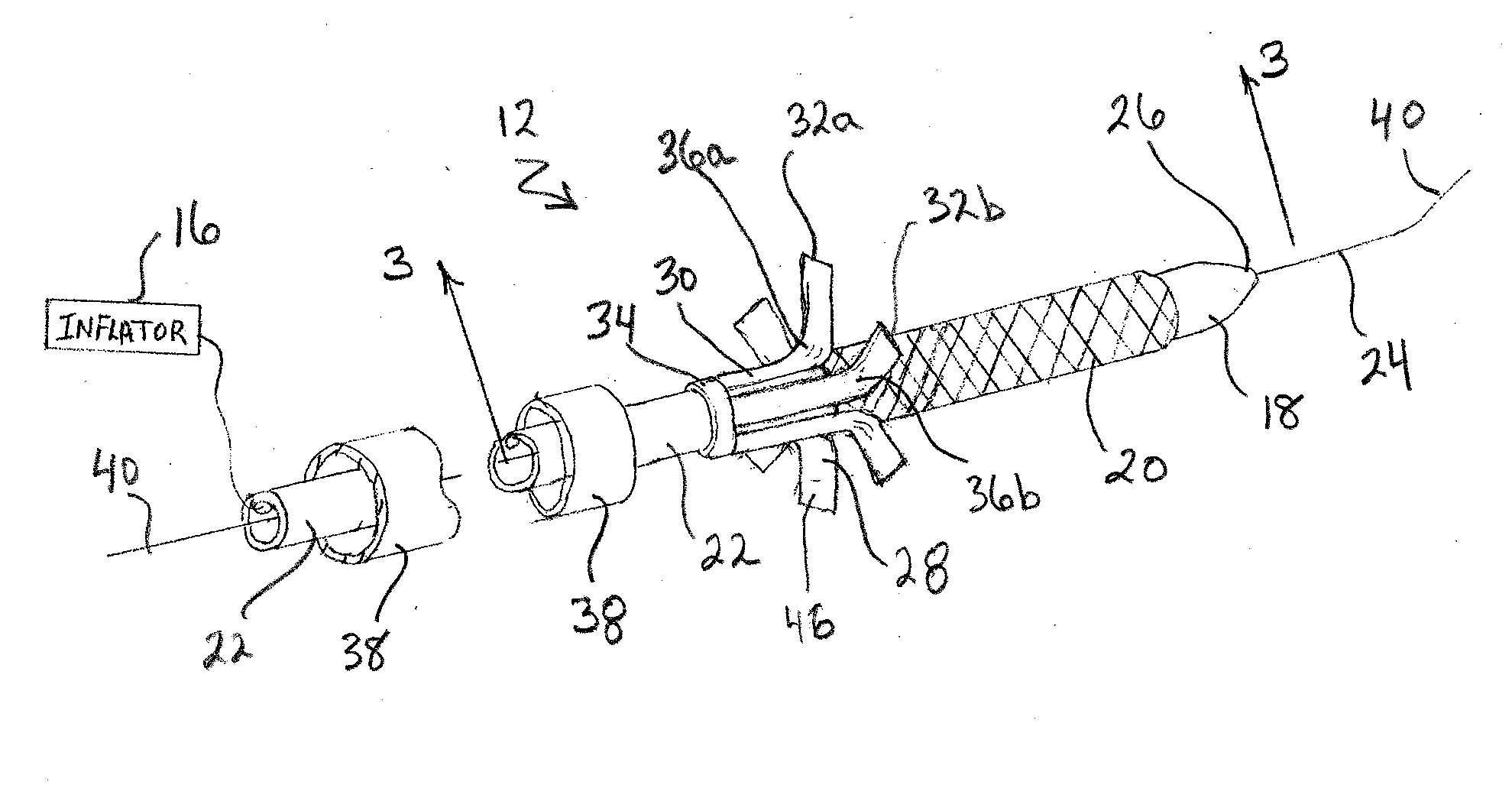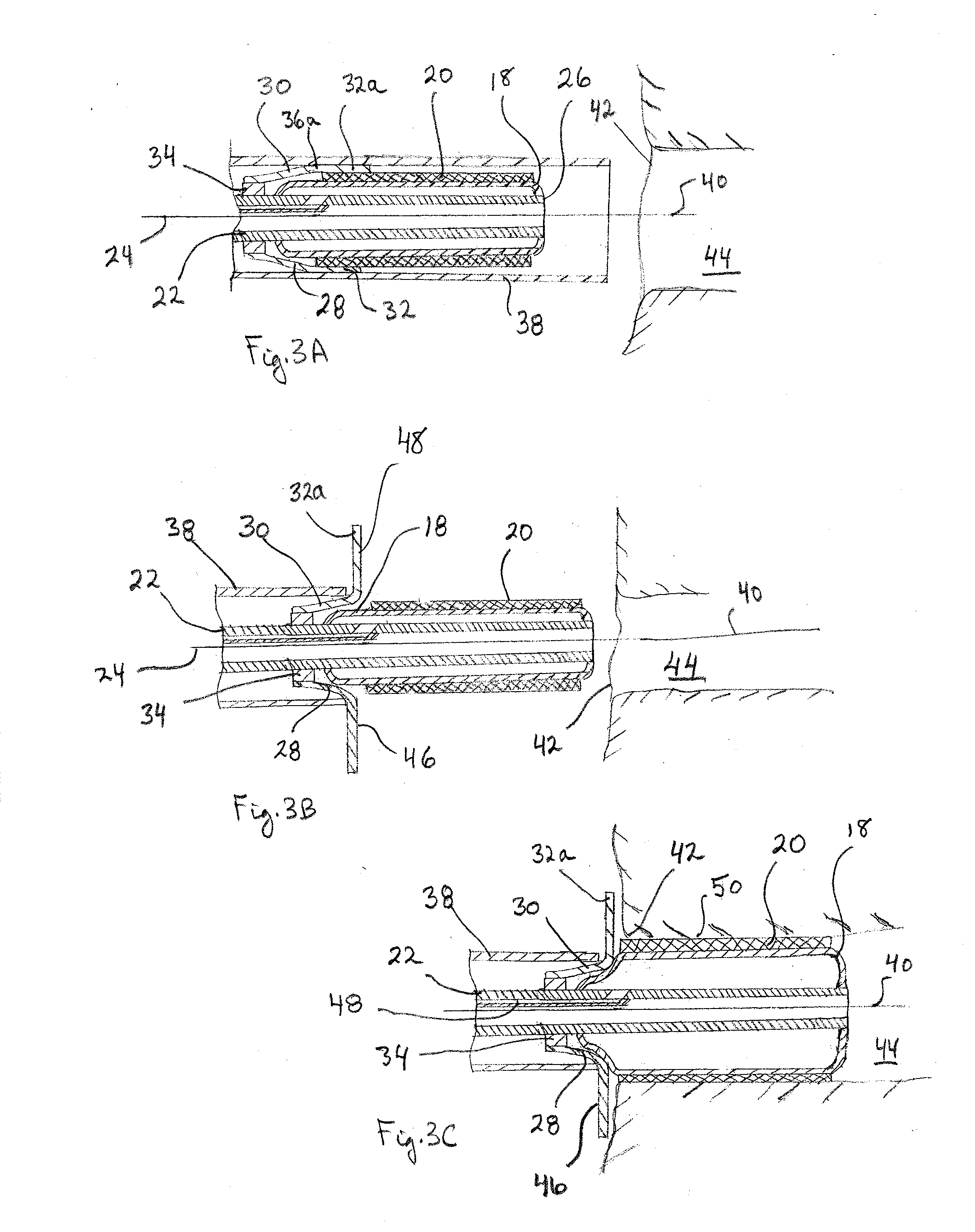System and Method for Placing a Coronary Stent at the Ostium of a Blood Vessel
a technology of coronary artery and stent, which is applied in the field of balloon catheters, can solve the problems of a restnosis or, perhaps, a collapse of the weakened blood vessel, and the need for limited insertion of the sten
- Summary
- Abstract
- Description
- Claims
- Application Information
AI Technical Summary
Benefits of technology
Problems solved by technology
Method used
Image
Examples
Embodiment Construction
[0023]Referring initially to FIG. 1 a system for delivering a stent to the ostium of a blood vessel in accordance with the present invention is shown and is generally designated 10. As shown, the system 10 includes a balloon / stent catheter 12 that is being advanced into the vasculature of a patient 14. Once the catheter 12 has been properly placed in the vasculature, an inflator 16 is activated to inflate a balloon 18. With this inflation of the balloon 18, a stent 20, that is positioned (crimped) onto the balloon 18, will expand. The stent 20 will then be left at the ostium of a blood vessel after the catheter 12 is withdrawn from the vasculature. Structural details of the balloon / stent catheter 12 will be best appreciated with reference to FIG. 2.
[0024]In FIG. 2 it will be seen that the balloon / stent catheter 12 includes a shaft 22 defining a longitudinal axis 24. For the present invention, the balloon 18 is affixed to the shaft 22 at a location immediately proximal the distal end...
PUM
 Login to View More
Login to View More Abstract
Description
Claims
Application Information
 Login to View More
Login to View More - R&D
- Intellectual Property
- Life Sciences
- Materials
- Tech Scout
- Unparalleled Data Quality
- Higher Quality Content
- 60% Fewer Hallucinations
Browse by: Latest US Patents, China's latest patents, Technical Efficacy Thesaurus, Application Domain, Technology Topic, Popular Technical Reports.
© 2025 PatSnap. All rights reserved.Legal|Privacy policy|Modern Slavery Act Transparency Statement|Sitemap|About US| Contact US: help@patsnap.com



